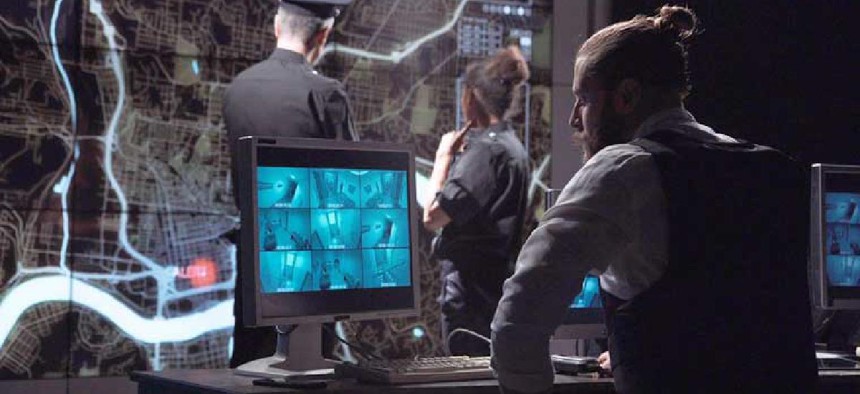Sheriff’s office expands data, video options with digital evidence system


Connecting state and local government leaders
A cloud-based digital evidence management system has enabled the Galveston, Texas, Sheriff’s Office to improve data collection, storage and sharing.
A cloud-based digital evidence management system has enabled the Galveston, Texas, Sheriff’s Office to free up terabytes of storage space on its servers and improve collaboration among public-safety agencies and the district attorney’s office.
Before deploying Genetec Clearance, the office had no digital evidence management system, said Captain Mike Bell, Identification Division commander at the sheriff’s office. Instead, they partitioned a part of their network storage server to store digital evidence. That worked well enough until digital cameras became ubiquitous, photo file sizes mushroomed and interviews were recorded digitally, rather than on tape.
“We had issues of not being able to track digital evidence,” Bell said. “For example, the report would say the evidence was put on the server, we would go to the server and it wouldn’t be there. There was no way to know [if] it was put up there and got deleted by someone or if it was never uploaded, so there was a lot of finger pointing.”
Through an app, Clearance provides the office with a secure way to store evidence and create audit trails, he said. Plus, “it’s freed up terabytes -- I mean 8 to 9 terabytes -- of storage space,” Bell said. “Since we went live with this in 2019, we’ve more than tripled our digital evidence storage.”
Additionally, officers can get digital evidence from other devices such as surveillance cameras and upload it into Clearance. They send a link to evidence holders, who can then upload the information.
“We provide means to upload the media electronically instead of having to send someone there in person,” said Erick Ceresato, senior manager of Genetec’s Product Group.
About 200 sheriff’s office employees use Clearance to collect data and save video interviews. One snag that they run into is slow uploads in areas with spotty internet connections. To address that, Genetec built an Uploader tool. Officers put their evidence in a folder on the sheriff’s office network, and Uploader moves anything in that folder into Clearance overnight.
Because Clearance is cloud-based, the office didn’t need any special hardware or software in place to make this work.
“We even gained access that we didn’t have previously, Bell said. Previously, patrol deputies would have to call the crime scene unit to take photos. Now, though, “deputies and detectives in the field can photograph or even do recorded interviews from their cellphones that upload directly into Genetec.” he said.
“We have more photography documentation of scenes than we’ve ever had, so it’s improving our investigation documentation,” he added.
Besides storage, the solution lets the sheriff’s office better collaborate with the public and with attorneys on criminal cases. When someone makes an open records request or submits a subpoena, or when attorneys request the digital evidence for discovery, the office can provide a link to the data through Clearance.
Because much of the data involved is sensitive, the company follows Criminal Justice Information Services standards for encryption, user authentication and access.
“That really became the skeleton for how we needed to structure the fundamentals of the system,” Ceresato said. It governs “how all the data that’s being uploaded is encrypted, how all of the activities within the application itself are being tracked within the audit trails so that we can provide the chain of evidence from the time the files are uploaded and track who’s viewed it, if it’s been shared, who has downloaded it, if it’s been accessed,” he said. It also ensures that that only authenticated users can review the files that are being shared with them, he added.
In May, Genetec announced a camera registry module for Clearance that lets individuals voluntarily register their cameras – phone, surveillance or otherwise. When an incident occurs, law enforcement officers can pull up a map showing registrants in the area and contact them to help with investigations. For instance, they could ask businesses that register for surveillance footage or homeowners for Ring images.
“Everything is very voluntary in how it gets contributed back to the law enforcement agency, and it’s really for citizens and business owners who want to engage and assist with the investigation process,” Ceresato said.
Although Galveston isn’t using that feature, the sheriff’s office can still get evidence through requests, Bell said.
“When a person or a citizen or a business tells us that they have video, we can send them a link through Genetec that allows them to copy over whatever they have off their phone or off their home system directly into the Genetec system, which puts it into our case so we can have access to it,” he said.




